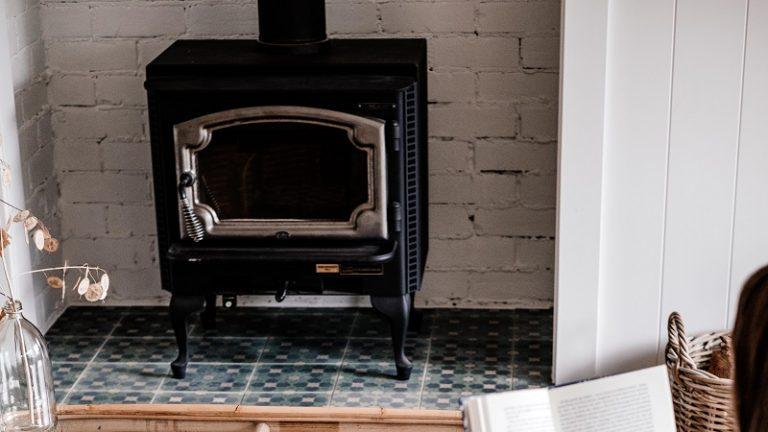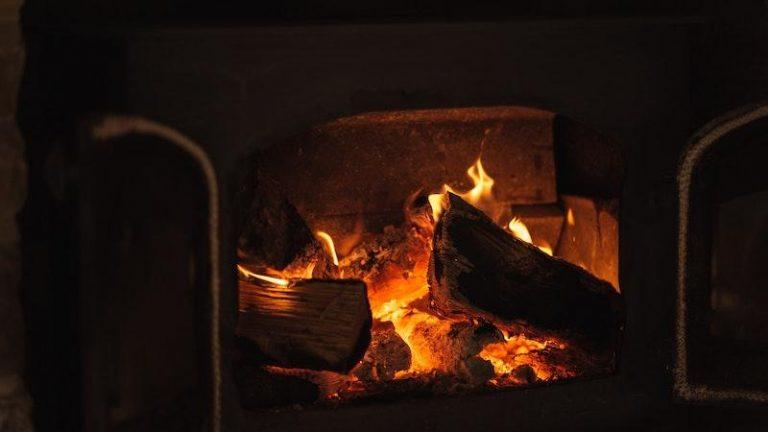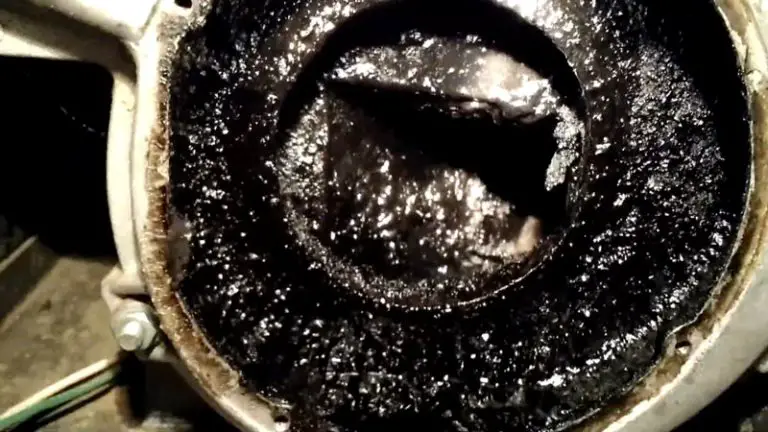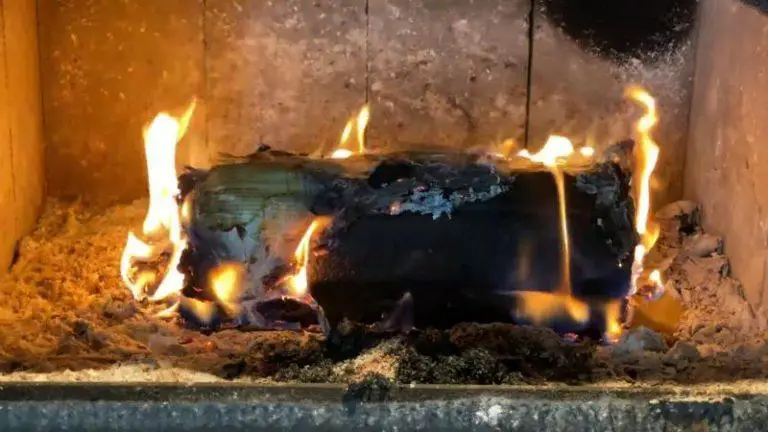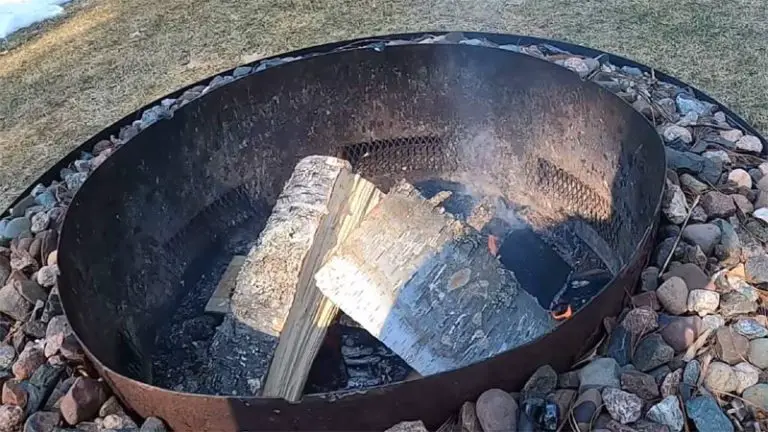Will A Hot Fire Remove Creosote

If you have a creosote build-up on your fireplace, chimney, or flue system, it is time to clean them up. Cleaning the system regularly will prevent any further accumulation of soot and ensure proper ventilation for your home. Maybe it’ll remove some creosote but not much.
Contact a professional if you’re not comfortable with this type of cleaning – they will know exactly how to go about it safely. The frequency of cleaning can vary depending on the size and make-up of each specific chimney. However, yearly maintenance is always recommended as a best practice.
Being proactive in keeping your Chimney Sweep safe and healthy is key to enjoying years of reliable heating and cooling seasonality.
You'll Learn About
Will A Hot Fire Remove Creosote?
Chimney cleaning is an important part of preventing creosote build-up in your fireplace and chimney. Cleaning frequency should be based on the severity of the buildup and how often you use your fireplace or stove.
If you notice any signs of a build-up, such as black soot residue around the flue, it’s time for a professional clean. Make sure to store all combustible materials away from your home’s exterior walls to prevent potential fire hazards
Creosote Buildup
Creosote buildup can be a major issue in your home if left untreated. You can use various techniques to remove creosote from your walls and floors, including a hot fire.
The process is time-consuming and may require professional help, but it’s worth the effort to rid your home of this problem. Make sure you take proper safety precautions when dealing with a hot fire; don’t try this at home unless you are experienced with the technique.
Removal of creosote from an entire room or house may take several sessions over several days or weeks.
Chimney Cleaning Frequency
Creosote is a residue that forms on surfaces due to fire and can accumulate over time. Regular chimney cleaning will help remove this build-up and prevent any future fires from happening.
Follow the manufacturer’s instructions for frequency of cleanings, as this will vary depending on the type of fireplace you have. If you notice any changes in your chimney’s performance or if there are black soot patches appearing, it’s important to get professional help right away.
Prevention is always better than cure when it comes to creosote buildup, so keep your Chimney Cleaning Frequency up.
Does burning a hot fire remove creosote?
If you’re cleaning up after a fire, know that burning aluminum cans in a hot fire will remove creosote but not much. Cleaning the chimney with a chimney brush is still necessary if there’s any leftover creosote.
Burning wood in a warm fire won’t remove creosote- you’ll need to use special tools such as an acid or gas burner instead. Make sure to call your local firefighters department if there are any large fires near where you live. They may be able to help clean up the messes left behind by the flames.
At what temperature does creosote melt?
Creosote is a type of oil that is used to treat wood. It can be found in many different types of products, like furniture and flooring. Creosote will melt at around 200 degrees Fahrenheit.
- Creosote melts at a hotter temperature when it is in contact with firewood. This is because the heat of the fire helps to break down the chemicals that makeup creosote. By melting creosote near a hot fire, you will be able to use less wood and speed up the process of removing it from your home.
- Make sure there is enough room for the fire in your chimney by adding additional flue space if necessary. Over-flamming can cause damage to your home and increase emissions levels.
- Keep your fireplace clean and free from soot build-up by burning only seasoned hardwood logs or chips. This will help keep flames climbing easily and reduce the chances of starting a dangerous forest fire inside your house.
- Don’t overheat yourself trying to melt creosote – allow the heater time to reach its proper operating temperature before beginning this task, as too much heat can actually start combustion processes prematurely which could result in serious injury or even death.
- Last but not least: always wear gloves when using any kind of open flame, especially around windows or doors where sparks may fly.
Can you clean a chimney when it’s hot?
If you have a hot chimney, it can be hard to clean. Make sure to wear gloves and safety glasses when cleaning the chimney, and wait until it’s cooled down before using the fireplace again.
Clean Chimney When The Fire Is Out
If you’re cleaning a chimney in hot weather, it’s important to make sure the fire is completely out before you start. This way, you won’t risk getting burned or starting a new fire. Once the fire is out, use a wet rag to scrub the inside of the chimney.
Make sure to avoid any sharp edges on the chimney and don’t let water get into any cracks or crevices.
Clean Chimney In A Cooler Timeframe If Possible
If it’s possible to do so, try to clean your chimney in a cooler timeframe than usual. By doing this, you’ll reduce the chances that you’ll cause further damage to your roof or walls by using too much water or soap fuel mix.
Make Sure The Fire Is Completely Out Before Cleaning
Before cleaning your chimney, always make sure that there is no active fire left burning inside of it. Checking for an extinguished flame will help prevent any potential accidents while cleaning up afterward.
What will dissolve creosote?
One way to try and remove creosote from a wood surface is to pour water on it and let it sit for a few hours. This will cause the creosote to dissolve and the wood surface should be able to be cleaned without damage.
Other things that can help dissolve creosote include acids, detergents, hot water, and alcohol.
There are a few different ways to remove creosote build-up from your chimney. One way is to use vinegar. If you need to clean the area more thoroughly, you can use a chemical cleaner.
Vinegar is an acid, so it will dissolve creosote. However, if you have a wood surface that has been treated with creosote, you should use a creosote remover. You can buy creosote removers from online woodworking suppliers.
What can I burn to clean my chimney?
If you can’t get rid of the smoke coming from your chimney, you may be able to clean it using something called a flue gas cleaner. This device uses an electric fan and heat to dislodge any soot and ash that has built up over time.
There are a number of ways that you can clean your chimney using a sodium chloride solution. This method is typically used to remove soot, ash, and other cement from the flue system of your fireplace. To make this cleaning process easier, use a screen on the bottom of the chimney to capture any ash and cementitious particles.
Make sure to keep your fire burning even when it’s cold outside; otherwise, condensation may form inside the chimney which will cause problems down the line. Finally, be careful not to overfill your burners with wood; doing so can result in an explosion.
How do you burn creosote logs?
Creosote logs can be burned using a variety of methods, but the most common is to place CSL on the burning embers and burn for 90 minutes. Let CSL burn out completely before removing it from the fire so that you do not risk any danger or accidents while doing so.
Make sure that your area and surrounding objects are well-ventilated when burning creosote logs as this process produces large amounts of smoke.
Does burning potato skins clean chimneys?
It is important to note that burning potato skins will not clean your chimney. It’ll prevent building up. Regular chimney cleaning is still required, even with reduced soot or creosote buildup after using potato skins as a fire starter.
Safe and proper use of the fireplace means following all safety guidelines to avoid potential injury or damage to your home. Finally, be sure to dispose of burned potato skins responsibly by placing them in an appropriate disposal container rather than setting them on fire again.
Can you burn wood with a creosote log?
You can use a creosote log in your wood-burning fireplace, but you must be careful not to let the chemicals on the logs fall to the bottom of the firebox and cause a big mess.
To avoid having to clean up any spilled creosote, make sure you remove it as it falls from the log during burning. Only use a wood-burning fireplace with a chimney cap or damper if it’s been properly cleaned and inspected beforehand.
Be aware that only certain types of wood burn well with creosote logs – choose carefully.
Where does creosote build up the most?
Creosote buildup in chimneys can happen if your fireplace is not used often enough, if the wood is not seasoned sufficiently, or if the room temperature is cooler than normal.
In order to prevent creosote build-up, make sure you restrict air supplies to your chimney when the fire isn’t burning and avoid using an unseasoned woodfire. Keep your living space cool by having adequate ventilation and ensuring that there are no excess heat sources nearby such as radiators or units.
If you find yourself experiencing frequent creosote problems, speak with a professional about installing a Chimney Cleaning System. Finally, be sure to check for any signs of creosote build-up on a regular basis so you can take appropriate corrective action.
A hot fire can help reduce creosote buildup in your chimney by burning it off at high temperatures. However, this method should be used cautiously, as it can also increase the risk of a chimney fire. Regular cleaning and maintenance are the safest ways to manage creosote.
If you’re dealing with creosote, it’s worth learning about the creosote bush, a plant known for its distinct odor. Additionally, understanding how to avoid creosote when smoking meat can provide insights into managing similar issues. For more tips, explore what’s inside a creosote sweeping log.
To Recap
No, hot fire will not remove creosote. Creosote is a type of tar that builds up over time on wood surfaces in an indoor or outdoor fireplace. Burning the creosote off the wood will not prevent any future fires from starting because the underlying flammable material remains.

